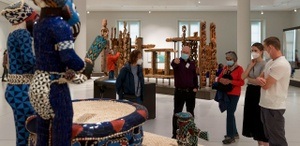Poröse Gegenwarten, poröse Texte. Mit Slata Roschal, Olivia Wenzel, Antonia Baum, Roman Ehrlich (Tag 1)
In the organizer's words:
Ultimately, it is the - rightly lamented - fractures, contradictions and cracks in the social fabric that also open up a view of the permeability and changeability of the existing. In this sense, Asja Lācis and Walter Benjamin developed a positive reference point for fragility, namely "porosity", in their 1925 essay "Naples". Inspired by the porous materiality of the tuff used for the buildings in Naples, they state:
"Porous like this rock is the architecture. Building and action merge in courtyards, arcades and staircases. In everything there is room for maneuver, which enables it to become the scene of new, unforeseen constellations. One avoids the definitive, the fixed. No situation appears as it is, as it is meant to be forever, no figure claims to be 'this way and no other'."
The "Naples" essay is an example of a way of writing that is itself "porous" - open, permeable, fragmentary. It is precisely in this way that the festival "Poröse Gegenwarten, poröse Texte" is looking for prose texts that address social rifts and fractures in literature - and whose form itself is an expression of this fragility. Due to their formal limitations, short texts per se have great potential to expose openness and thus make porosity tangible both linguistically and structurally.
Open Air
in good weather
Supported by the Hauptstadtkulturfonds
This content has been machine translated.













